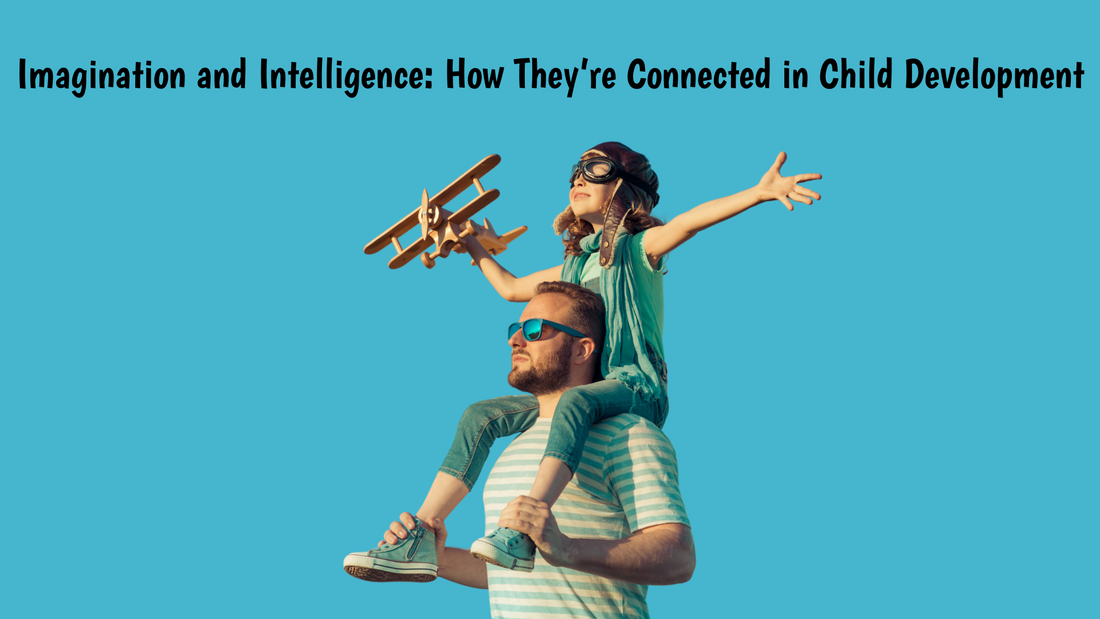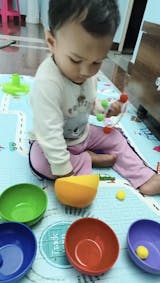Imagination and Intelligence: How They’re Connected in Child Development
In the early years of life, children explore the world not just with their senses but with their imagination. From pretending to fly like a bird to turning a blanket into a magic cape, these playful moments are more than just fun. They are the building blocks of intelligence.
Imagination and intelligence are closely linked in child development. While intelligence is often measured through logic and reasoning, imagination fuels creativity, problem-solving, emotional awareness, and even academic performance. When nurtured together, they shape children into thoughtful, adaptable, and innovative individuals.
Let’s explore how imagination and intelligence go hand in hand during the critical years of child development.
What Is Imagination in Children?
Imagination is the ability to create mental images, stories, or ideas that go beyond the present moment. In children, it often appears as pretend play, storytelling, or role-playing. These creative acts are more than just fun—they’re how children make sense of new experiences and rehearse problem-solving.
What Is Imaginative Play?
Imaginative play—also known as pretend play, make-believe, or fantasy play—is when children create scenarios and act them out in a way that goes beyond reality. It involves using their imagination to assign roles, tell stories, and bring objects or ideas to life. This type of play is a cornerstone of early childhood development.
Examples of Imaginative Play
-
Pretending to be a doctor, teacher, or superhero
-
Using a stick as a magic wand or a box as a spaceship
-
Creating stories with dolls, action figures, or stuffed animals
-
Hosting a tea party with imaginary guests
-
Building a castle out of blocks and protecting it from dragons
-
Kids often use clay models in pretend play, like serving clay food or playing doctor.
When Does It Start?
Most children begin engaging in imaginative play between 18 months and 2 years old, and it becomes more complex by ages 3 to 10. This phase is often referred to as the “magical thinking” stage, when children blur the lines between real and pretend.
The Connection Between Imagination and Intelligence
Here’s how imagination and intelligence work together to shape a child’s development:
1. Problem-Solving Skills
When a child imagines different scenarios—like pretending to be a doctor or building a city with blocks—they're experimenting with real-world challenges. This helps develop critical thinking, creativity, and decision-making.
2. Language Development
Imaginative play involves dialogue, storytelling, and new vocabulary. Whether they're pretending to run a store or acting out a fairy tale, children practice expressive and receptive language, enhancing their verbal intelligence. Children who engage in imaginative play often show advanced verbal intelligence and communication skills.
3. Emotional Intelligence
Through role play, children explore different perspectives and emotions. Pretending to be a parent, pet, or firefighter helps them understand empathy, cooperation, and emotional regulation.
4. Cognitive Flexibility
Imagination encourages kids to shift between ideas and adapt to new information—core elements of cognitive intelligence.
5. Memory and Learning
Creating mental images or stories helps with memory retention. This imaginative approach makes learning more engaging and effective. Imaginative children are better able to adapt to new situations. Switching between roles or storylines strengthens their executive functioning skills—planning, shifting focus, and managing multiple ideas at once.
Ways to Nurture Imagination and Intelligence
Looking to support both imagination and intelligence in your child? Here are a few simple and effective ideas:
1.Encourage Pretend Play
Let your child dress up, create characters, or invent adventures. Open-ended toys like dolls, costumes, and blocks are great tools.
2.Read Together Daily
Books stimulate the imagination and introduce new vocabulary, settings, and ideas that enrich a child’s understanding.
3.Provide Creative Tools
Give your child crayons, clay, building sets, or musical instruments to encourage imaginative expression.
4.Ask Open-Ended Questions
“What do you think will happen next?” or “How would you solve that?” prompts your child to think creatively and analytically.
5.Explore the Outdoors
Nature inspires curiosity and wonder—two key ingredients of imagination. A walk in the park can become an adventure full of learning moments.
How Parents and Educators Can Nurture Imagination
-
Provide open-ended materials: Blocks, clay-dough or sensory play , dress-up clothes, and nature items encourage creative exploration.
-
Make time for unstructured play: Let children lead their own play without rigid rules or outcomes.
-
Ask open-ended questions: “What happens next in your story?” or “How else could we build this?”
-
Create imaginative environments: Forts, outdoor spaces, or themed corners can inspire new adventures.
-
Limit screen time: Encourage real-world engagement that activates creativity.
Imagination is more than just play it's a powerful tool for learning and growth. Imagination is not the opposite of intelligence it is a partner to it. When children imagine, they’re learning how to think critically, communicate clearly, and solve problems creatively. These skills are not just for childhood they are foundations for lifelong success. By valuing and supporting imaginative play, we are not only encouraging joy and creativity but also nurturing the intelligent minds of tomorrow.
Let’s build a world where children aren’t told to “just stop pretending” but are encouraged to dream bigger, think deeper, and imagine freely.














